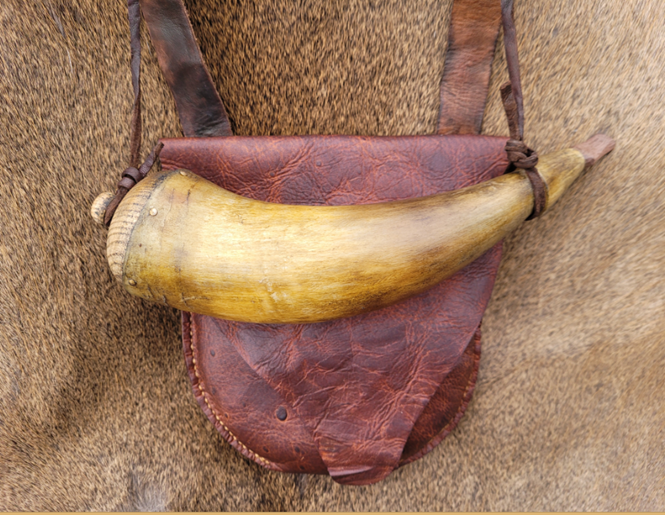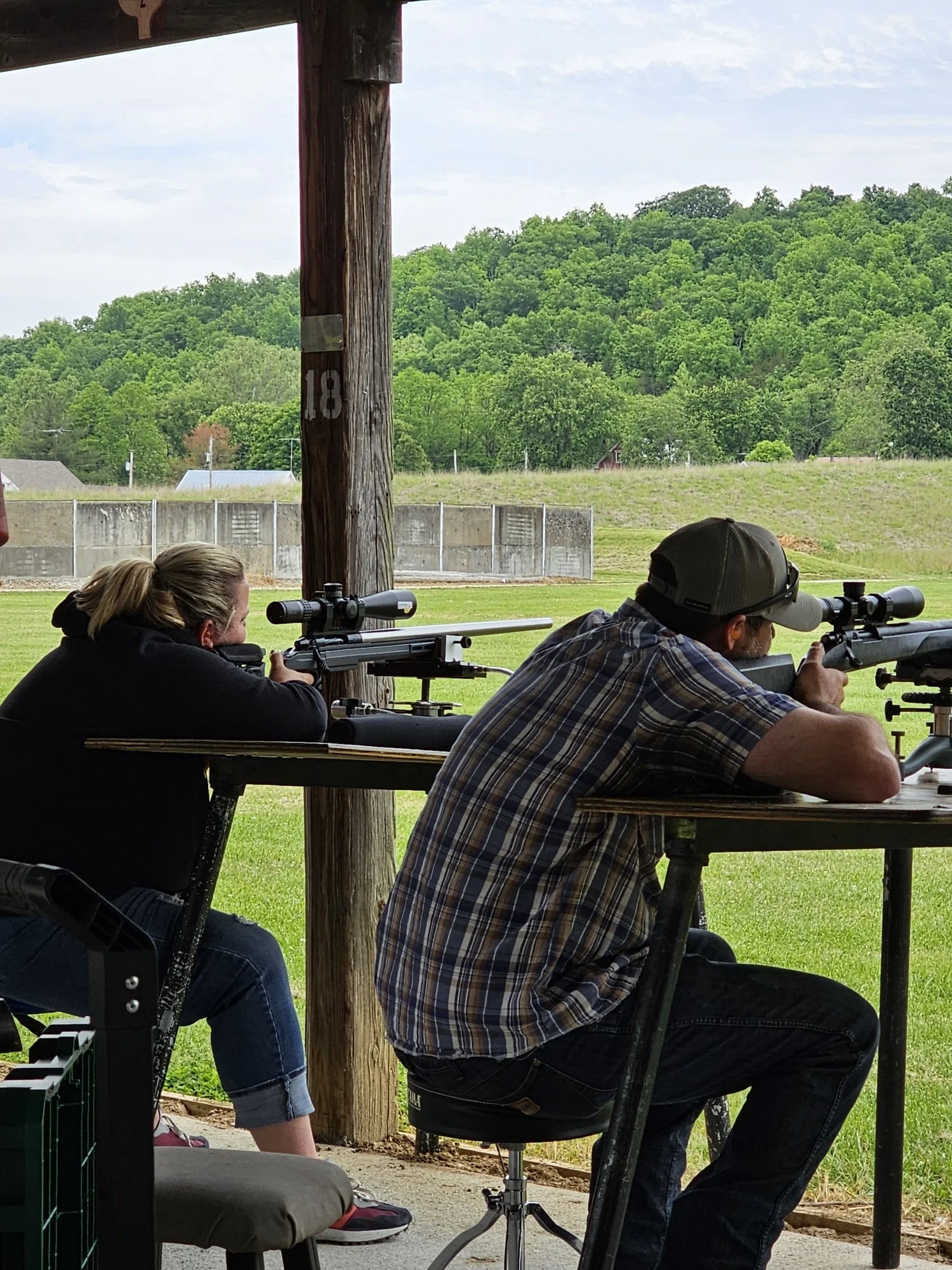Have you been thinking about a new gun for this year? Or possibly a new pouch, horn, or knife? That can add up to a lot of money, especially for a custom muzzle loader or other handmade gear. Here’s an idea, instead of spending all that hard earned money on a new gun, or gear, why not enter for a chance to win it? This year we are once again having our Gunmaker’s Hall Giveaway. This is a great opportunity to win a custom muzzle loader and many other handcrafted items. It’s also a great way to support the NMLRA. All prizes are handmade by some of this country’s premier contemporary muzzle loading artists.
Here's a bit of how it works. The Gunmaker’s Hall Committee comes together, a year or more in advance, during the NMLRA spring shoot, and starts work on the following year’s prizes. We work on the giveaway guns and prizes at Gunmaker’s Hall, during the shoots held at the Walter Cline Range. We’ve been known to bore barrels, rifle barrels, inlet barrels into stocks, hand forge hardware, make knives, craft horn work, engrave metalwork, carve gunstocks, and even build entire guns, at the Hall during the shoot. Other artists and craftspeople stop by the Hall and share their knowledge. Presentations are given and discussions are held, often over the very projects that will be in the Gunmaker’s Hall Giveaway. By the way, these presentations are free, and open to the public. All this work comes together in September at the Walter Cline Range during the NMLRA Fall Shoot at the annual Gunmaker’s Hall Giveaway, when we giveaway the muzzle loaders and the other handmade prizes.
We have two custom made rifles in the Gunmaker’s Hall Giveaway this year. Bart Copenhaver, a top notch gunmaker from Pennsylvania, made a Christian Oerter style flintlock. This is a beautiful piece and you will be seeing more of it in upcoming Muzzle Blasts articles. Warren Whitley, of Tennessee, made a really nice iron mounted Southern rifle for the Incentive Gun. Warren’s is another fine piece and really needs to be seen; it is beautiful. Warren’s gun will be featured in an upcoming article and both guns will be on display at Gunmaker’s Hall during the spring and fall shoots at the Walter Cline range in Friendship, Indiana.
Christian Oerter flintlock muzzleloader by Bart Copenheaver of Pennsylvania.
Southern Mountain flintlock muzzleloader by Warren Whitley of Tennessee.
Shooting pouch by Jeff Luke of Ohio.
We’ve got more fantastic prizes for the giveaway this year. Jeff Luke has presented his leather working skills at the Hall, has a booth on commercial row, and is a very fine craftsman. Jeff has made a really cool shooting bag for the giveaway. He makes something every year for us and this one is outstanding. We can’t thank him enough for everything he has done. Here’s what Jeff had to say about this year’s bag;
“For my donation to this year's Gunmakers Hall Giveaway I wanted to create a hunting pouch that might have been seen in the southern mountain region of the country in the early to mid-19th century. The pouch is heart shaped, a common southern Appalachian style of the era, with turned construction and a "bearded" flap with six layers of hand cut fringe sewn to the flap face. The pouch is constructed of 3-4oz veg tanned cowhide and the 1" strap has a nice forged buckle by John Rader. Everything is handstitched with linen thread at six stitches per inch.”
Wow, is that cool or what? Look at the pictures with this article and you will see what I mean. That pouch will make someone very happy (that someone could be you). It’ll probably make you shoot better too. Thank you, Jeff Luke!
Wooden shooting box made by Russel Combs.
Russel Combs donated a hand made shooting box to the giveaway. Gunmaker’s Hall has helped to support the pistol line over the years and Russ wanted to return the favor by supporting Gunmaker’s Hall and the NMLRA. His has offered the choice of one, of his three handcrafted wooden shooting boxes. Made in Cherry, Walnut and Red Cedar, they are all works of the highest art. Which one would you choose? We’re taking a poll and will decide during the June Shoot at the Walter Cline Range in Friendship Indiana.
What do you have to do to win the pouch Jeff Luke made, one of Russel’s shooting boxes, or one of those fine muzzle loading rifles? Simply buy some tickets for the 2024 Gunmaker’s Hall Giveaway. The tickets are available for sale at Gunmaker’s Hall during the spring and fall shoots, in Muzzle Blasts, and on the NMLRA website (nmlra.org). You could be a prize winner!
The schedule of ticket prices for the drawing will remain the same as last year: one ticket for $5, 3 tickets for $10, eight tickets for $20, and 25 tickets for $50. Those who subscribe to the $50 option will have their tickets held separate and entered first into the drawing for the Incentive Gun made by Warren Whitley. After this drawing, all tickets will be brought together for the main drawing featuring Bart Copenheaver’s longrifle, the pouch, box, and other prizes. You can purchase tickets at Gunmaker’s Hall during the national shoots, in the magazine, and on the NMLRA website nmlra.org. You may copy tickets printed from the magazine and the web, but please make sure the size stays the same. When you cut out the tickets, please trim them to size. When you put your contact information on the ticket, please put your NMLRA member number on there too. Send your tickets and money to the NMLRA, PO Box 67, Friendship, IN 47021. You could win one of two custom long rifles or any of the other handmade items provided to our drawing. We would appreciate your support! This drawing is not valid where prohibited by law.
If you, your company, or someone you know would like to contribute an appropriate prize item for our drawing, or simply make a donation to Gunmaker’s Hall, please contact me at gunmakershall@gmail.com Donations are greatly appreciated by myself, the Gunmaker’s Hall Committee and the NMLRA.
I’ll see you at the Hall.
Benjaman Quearry, gunmakershall@gmail.com

































![Virginia Shot Pouch Class with Jeff Luke [VIDEO]](https://images.squarespace-cdn.com/content/v1/5d2f0e173a371f00015138b8/1619015107676-I8KLGNCZWUFR59JJEOBM/DSC_9128.jpg)
